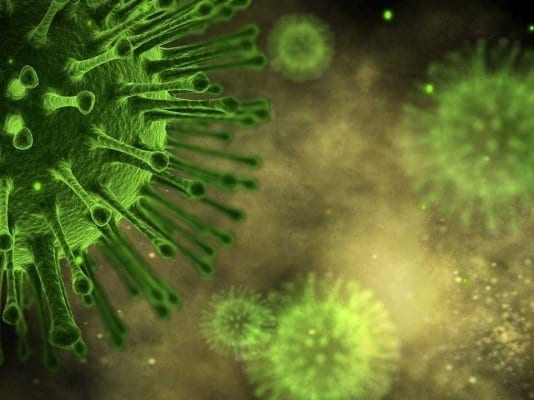Emerging bird flu viruses continually threaten to cause pandemics, underscoring the need for better ways to predict potential outbreaks.
A recent study shows that circulating bird flu viruses are very similar to the flu virus that caused the 1918 pandemic—the most devastating disease outbreak ever recorded. Only a few amino acids separate viral proteins currently found in bird populations from proteins in the 1918 virus, suggesting that a similar deadly virus may emerge in the near future.
“Because avian influenza viruses in nature require only a few changes to adapt to humans and cause a pandemic, it is important to understand the mechanisms involved in adaptation and identify the key mutations so we can be better prepared,” says senior study author Yoshihiro Kawaoka of the University of Wisconsin-Madison. “Research findings like this help us assess the risk of outbreaks and could contribute to routine surveillance of influenza viruses.”
The 1918 flu pandemic, known as the Spanish Flu, killed an estimated 50 million people around the world. Today, wild birds harbor a large pool of flu virus genes that may encode proteins with high similarity to the 1918 viral proteins. But, until now, the likelihood that a virus similar to the infamous 1918 virus will emerge and cause a pandemic in the human population had been unclear.
To assess this risk, Kawaoka and his team generated a flu virus composed of eight currently circulating gene segments encoding proteins that resemble the 1918 viral proteins. The resulting 1918-like virus caused flu-like symptoms in ferrets—the best animal model for studying flu virus infection. When the 1918-like virus acquired seven amino acid mutations in a few key proteins, it spread efficiently from animal to animal, suggesting that it has the potential to cause a pandemic.
Moreover, the 1918 viral proteins differed by only a few amino acids from viral proteins that are now circulating in bird populations around the globe, and these subtle differences could be the only thing keeping current viruses from efficiently infecting and spreading among humans. If viruses resembling the 1918 virus acquire a few key mutations to overcome this hurdle, they could potentially cause a pandemic in humans in the near future.
“The worst-case scenario is the emergence of a novel avian influenza virus that exhibits high pathogenicity in humans, like H5N1 viruses, and efficient transmissibility in humans, like seasonal influenza viruses,” Kawaoka says. “Our findings demonstrate the value of continued surveillance of avian influenza viruses and reinforce the need for improved influenza vaccines and antivirals to prepare for such a scenario.”
Read the study at Cell Host & Microbe: Circulating avian influenza viruses closely related to the 1918 virus have pandemic potential.



